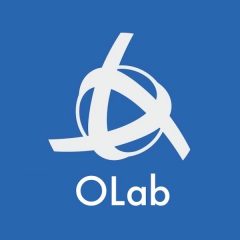While much of the infrastructure of OLab has been retained in our major shift from OLab3 to OLab4, there are certain objects that did not make the cut. A number of components and functions in OLab3 have become obsolete or significantly changed.
We are pleased that for the core functions and features, such as pathways, nodes, images, files, questions and counters, we have retained full compatibility. Nobody wants to spend a bunch of time converting existing content.
Here are the things that are not likely to make the cut. Many of them will have a better alternative. If you have concerns, please contact us.
Elements:
These are like statics or constants that can be pre-assigned and then used to display reusable content in a Node. We have retained the simple text type of Element and they now called Constants. They are now Scoped Objects to make them easier to reuse and refer to across maps. But we will be dropping the various sub-types of Elements
Clusters:
These are supersets of Elements. Nobody uses them that we are aware of, since OLab2. They have been dropped.
Rules:
These are very powerful and useful, but very hard to use and write. We are exploring some different approaches to conditional navigations and manipulation of Counters.
There are other changes under way and we will update this page as needed. We do plan to retain very good backwards compatibility for the vast majority of case content so you do not need to modify most existing material.
These will likely be replaced by Script Objects, and included as development funding allows.
Skins:
One of the big changes about how objects are laid out in a page is that we are moving from map-based layouts (in Skins) to node-based layouts. OLab’s Skins have been a bit of a kludge, using some CSS elements but not consistently. To some degree, all OLab cases tend to have a certain style or look, which is pretty old fashioned and boring.
We will instead have Themes. These are similar to Skins but can more easily be over-ridden on a per-node basis.
The layout follows Responsive Design principles but only to a degree. And unless you manually craft your page layout using lots of divs, it is hard to place things where you want on the page. The new node-based layout approach will make this much more possible. We will have some Theme templates so that groups can encourage a certain design style, but these can be easily modified from node to node. Skins will be dropped.
Link names:
Currently, there are 3 different ways to modify the title of a Link button. This will be made simpler and more consistent.
InfoButton panels:
These are useful but are tied to Nodes and can be difficult to reuse. They can still be created, as secondary panels or tabs, but will not be linked to Nodes in the same way.
Chats:
These will become a type of QUestion.
Sets:
These were never properly implemented and will be dropped. They were oddly named in the underlying SQL tables, which causes confusion. We are pretty sure that no organizations used them.
Map level feedback:
Very little use seems to be made of this since OLab2.
Sections:
While these were useful for some design functions in OLab3, such as easier Ordered Links and Prevent Revisit, at this time there is not sufficent demand to keep Map Sections.
Counter displays:
These were requested by one project funder but have not seen signficant use and have therefore been discontinued.
Pop-up messages:
These were quite useful but did not see use outside of our own internal teams and have therefore been discontinued. Their function could be incorporated into Script Objects if there is future demand.

